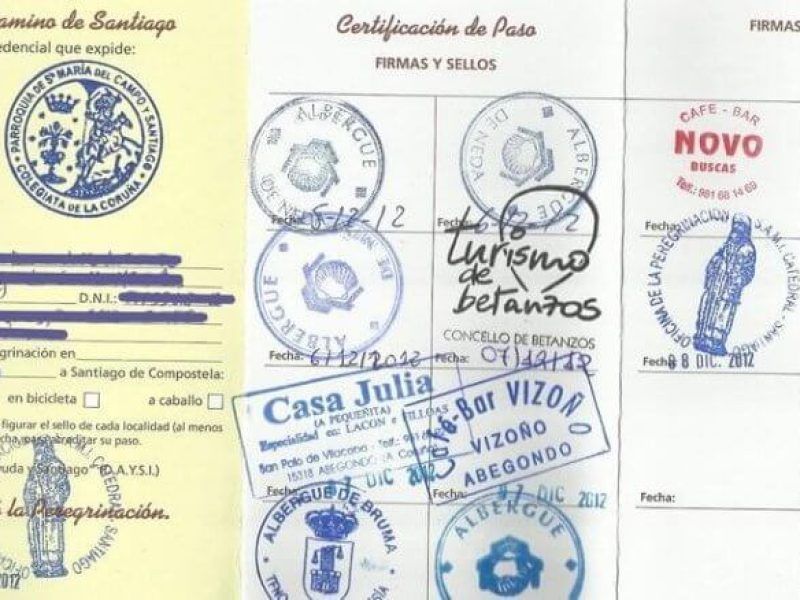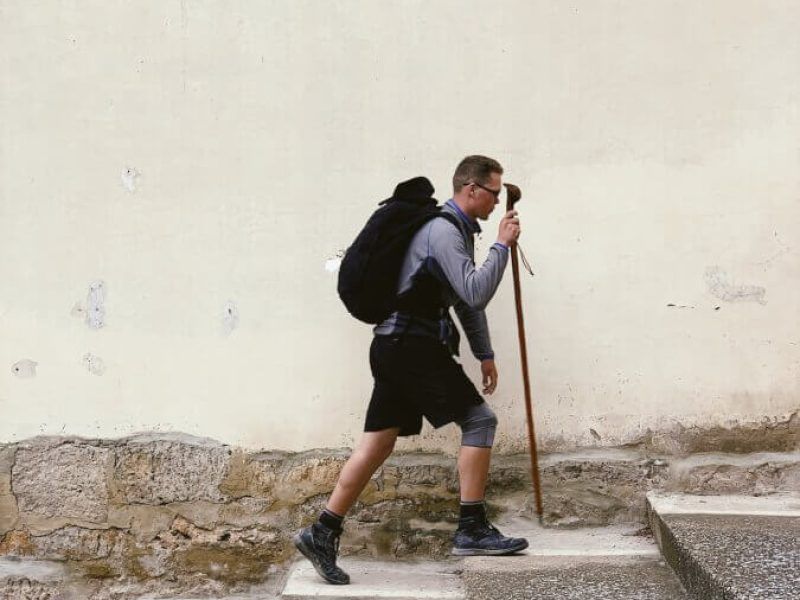The Camino de Santiago, an age-old pilgrimage of faith, culture, and personal challenge, enters a new era as the Pilgrim Passport—traditionally a paper testament to one’s journey—transitions into the digital realm. This Holy Year, the digitalization of the Pilgrim Passport, also known as the Credential, represents a significant leap forward, merging centuries-old traditions with the conveniences of modern technology. The shift not only enhances the pilgrim experience but also reinforces safety for both walkers and hospitaleros, ensuring the spirit of the Camino thrives in today’s world.
Do you know what is the Pilgrim Passport or Credential for the Camino de Santiago?
Did you know that to officially join the pilgrim to Santiago de Compostela you need to have your own Pilgrim Passport or Credential? This consists in a leaflet, a personal and non-transferable that gives complete access to the experience, a sort of guide, helping in finding accommodation and proving the distance you walked by the type and number of stamps that you present. This document goes back to the Middle Ages, when every pilgrim was given a letter of safe passage that allowed them to travel freely and without risks.

A digital Pilgrim Passport or Credential developed to encounter modern needs!
The Cathedral of Santiago and the Xunta de Galicia presented the digital Pilgrim Passport or Credential, the new functionality which they intend to adapt to the new times. The digital Pilgrim Passport or Credential, which will be managed through a mobile application, seeks to provide greater comfort to the pilgrim, in addition to guaranteeing a safe Camino de Santiago, avoiding contact between hospitaleros and walkers, obtaining their stamps through the capture of QR codes..
How will the digital Pilgrim Passport or Credential work?
The digital Pilgrim Passport or Credential is coming into force with Holy Year 2021-2022 or Xacobeo 2021, a very special year on the Camino de Santiago after eleven years without celebrating it. The pilgrim can download a mobile application, which will be available for iOS and Android platforms in eight languages. Through this app, you can get the two daily stamps necessary to prove your pilgrimage to Santiago. These stamps, also digital, can be obtained through the QR codes available at the different points of the Camino de Santiago.
An official website for the digital Pilgrim Passport or Credential
The project will also have an official website where establishments with a seal can register and digitize their image. Thus, they will obtain the necessary QR code so that the pilgrim can scan it with their mobile and incorporate it into their digital Pilgrim Passport or Credential. The mobile application in which the digital Pilgrim Passport or Credential can be managed will have information on the different Camino Routes and, in addition to making it possible to capture the stamps through the QR, will allow the integration of the data in the Pilgrim Registry necessary to achieve the Compostela.
The application to generate digital stamps is launched
As a step prior to the implementation of the Digital Pilgrim Passport or Credential, the Cathedral of Santiago de compostela launched in January of the Holy Year 2021-2022 the digital tool with which the different points of the Camino can generate their stamps. From that moment you can access this online tool from the websites of the Cathedral of Santiago de Compostela and the Pilgrim Reception Office.
Seal for the Pilgrim Passport or Credential
Hostels, Associations of Friends of the Way, parishes and other points of the sealing of the Pilgrim Passport or Credential can already register and register their stamp, previously digitized, or create a predetermined one, in the case of not having it in digital format. Once the seal has been validated, a QR code will be downloaded that can be made available to pilgrims so that they can incorporate it into their digital Pilgrim Passport or Credential throughout the different stages in Holy Year 2021.
What about the Pilgrim Passport or Credential on paper?
The incorporation of this digital certificate will not mean the disappearance of the Pilgrim Passport or Credential in Holy Year 2021 on paper. In fact, any pilgrim who wishes can continue to use the traditional Credential and collect the stamps that certify their passage through the different stages of the Camino. Both the Cathedral of Santiago de Compostela and the Xunta have ensured that the stamps obtained virtually will be the same as the Pilgrim Passport or Credential on paper, avoiding differences between one and the other. However, both entities have pointed out that the digital modality will offer greater comfort for the pilgrim in Holy Year 2021, in addition to increasing health security, one of the priorities in these months.
Register of Pilgrims and “digital queue” for Compostela
The launch of the digital Pilgrim Passport or Credential in Holy Year 2021 is one more example of the commitment to the implementation of new technologies in the Jacobean Routes. A process that has been accelerated by the crisis caused by Covid-19, after which it is more necessary than ever to guarantee a safe Camino de Santiago. Among the digital advances in recent months, it is worth highlighting the reservation platform for public hostels in Galicia, which will soon be joined by a new one for private accommodation.

Pilgrims office at the cathedral of Santiago De Compostela
The Cathedral of Santiago has also advanced in the digitization of the Camino de Santiago with the incorporation of the Pilgrim Registry and the “digital queue”, two key steps to obtain the Compostela at the Pilgrim’s Office. From this summer, pilgrims must enter their data in the Registry so that their Compostela is ready upon arrival in Santiago. The new system for obtaining the Compostela also includes an online appointment system.
QR Code
Thus, when you arrive at the Pilgrim’s Office with your Pilgrim Passport or Credential in Holy Year 2021, you will get a QR code with the approximate time you can pick up the Pilgrim Passport or Credential. With this code it is also possible to consult the progress of the queue in real time. With this measure, the Cathedral wanted to solve the long queues that occurred during some months of the year, especially in summer.To offer greater facilities to pilgrims, the mobile app of the digital pilgrim Credential will in Holy Year 2021 allow interaction with other web tools, such as the Pilgrim Registry. In addition, it will allow those responsible for the Office to know the approximate volume of pilgrims who will arrive in Santiago in the near future, in order to adapt the necessary resources.
A Digital Companion for the Timeless Camino
The Camino de Santiago’s embrace of digital innovation with the new Pilgrim Passport app is a testament to the pilgrimage’s enduring adaptability. As the Camino winds through the breathtaking landscapes of Spain, the digital Credential ensures that the path walked by millions over centuries remains unimpeded, even as the world changes around it. The convenience of a mobile application, coupled with the assurance of health and safety, offers pilgrims the freedom to focus on the essence of their journey—spiritual growth, reflection, and connection.
The Journey Forward
In this Holy Year and beyond, whether you choose to carry the traditional paper Credential or opt for the digital version, the Camino continues to welcome all. It holds out the promise that, regardless of how you record your steps, the walk itself remains unchanged—timeless, transformative, and transcendent. As you set out on your Camino, let WAW.travel guide you towards this life-changing adventure, digitally enhanced, but spiritually as rich as ever. Check our pilgrim routes and don’t hesitate to contact us for any curiosity regarding Camino de Santiago, we will be happy to help you join this life-changing adventure! Write an email to hey@waw.travel or follow us on our social profiles for constant news and updates: Instagram – Facebook.



Comment (0)